Analysis of Wear-Resistant Spiral Elbow and Pneumatic Conveying Pipeline Wear Issues
In pneumatic conveying systems, when particulate materials pass through elbows, they collide directly with the end of the elbow, causing rebound and turbulence. These phenomena lead to rapid pipe wall wear, decreased flow velocity, reduced transport efficiency, and in severe cases, blockages. Many conventional countermeasures have been developed to address these issues, but each has its own limitations.
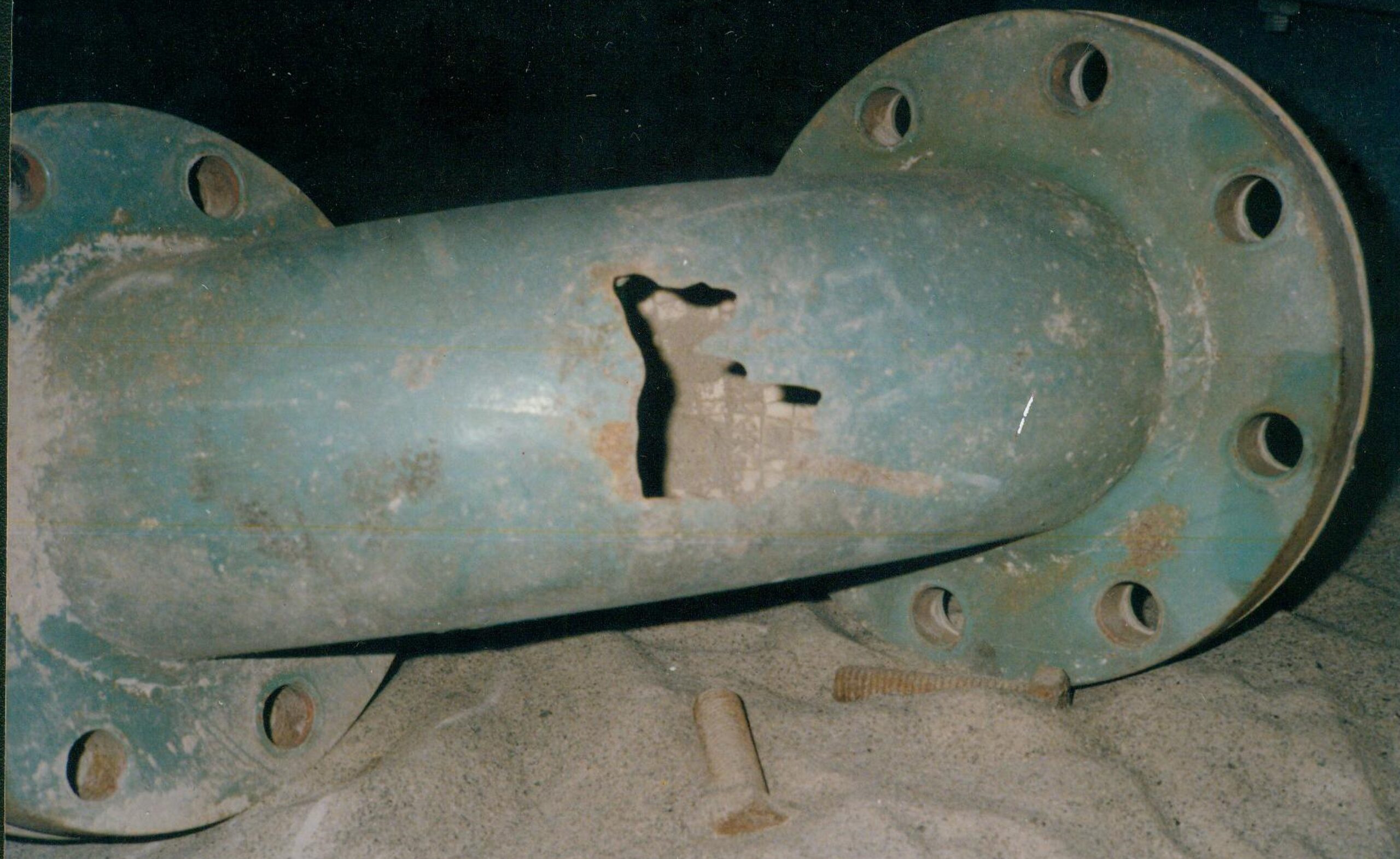
Worn Ceramic Lined Elbows
Wear Issues and Improvement Measures for Conventional Elbows
Problems with Conventional Elbows
Rapid wear of elbow inner walls: When materials enter the elbow from a straight pipe, they collide directly with the pipe wall and repeatedly rebound and strike, causing severe wear on the inner wall.
Decreased flow rate and blockage: Collisions generate turbulence, preventing smooth flow of materials, reducing transport efficiency, and potentially causing full blockages.
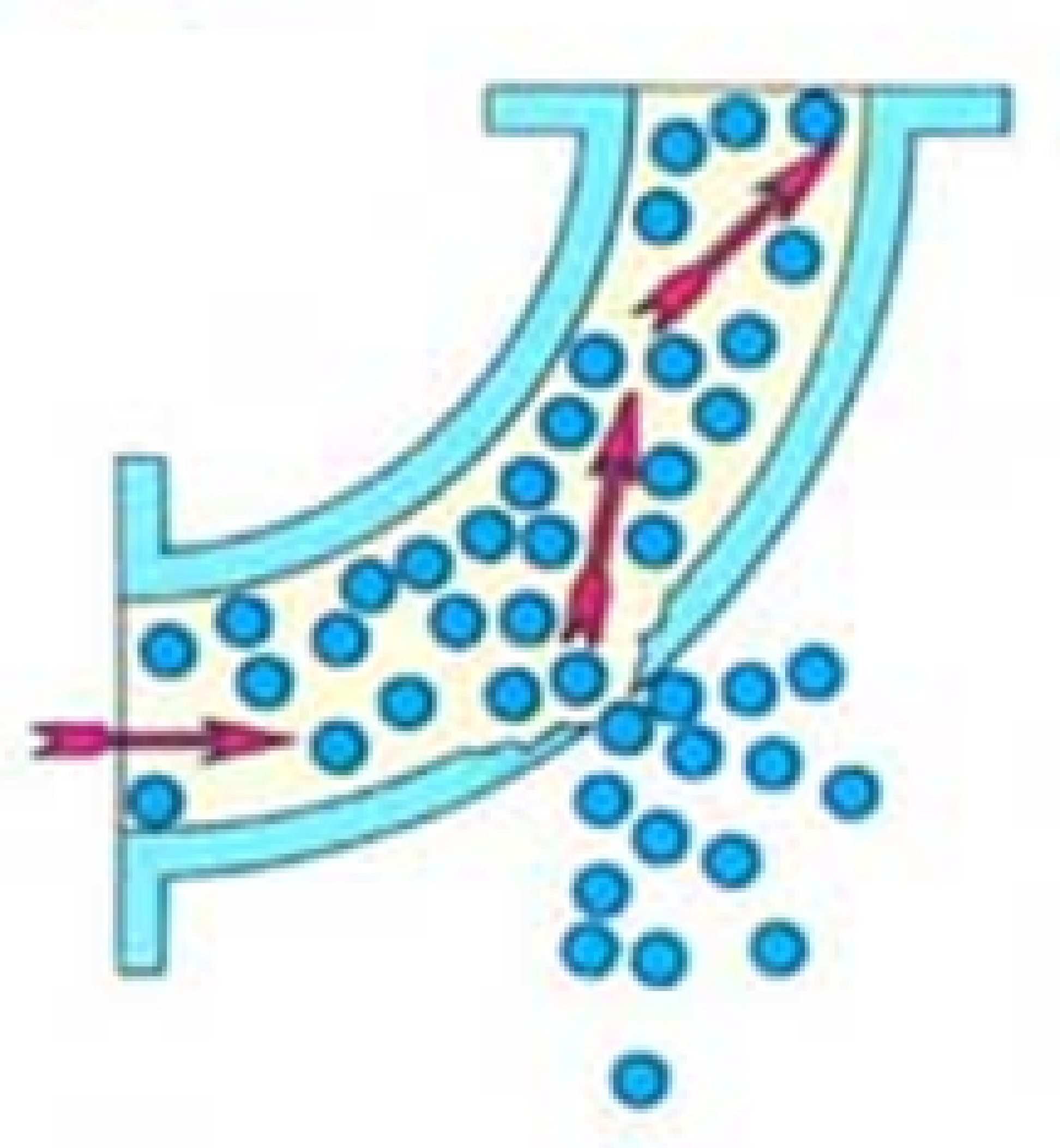
Increased pressure and equipment wear: To resolve these issues, pressure is increased or secondary compressed air is introduced upstream of the elbow, but this accelerates elbow wear and shortens equipment lifespan.
Conventional Countermeasures and Their Limitations
Large Radius Elbows
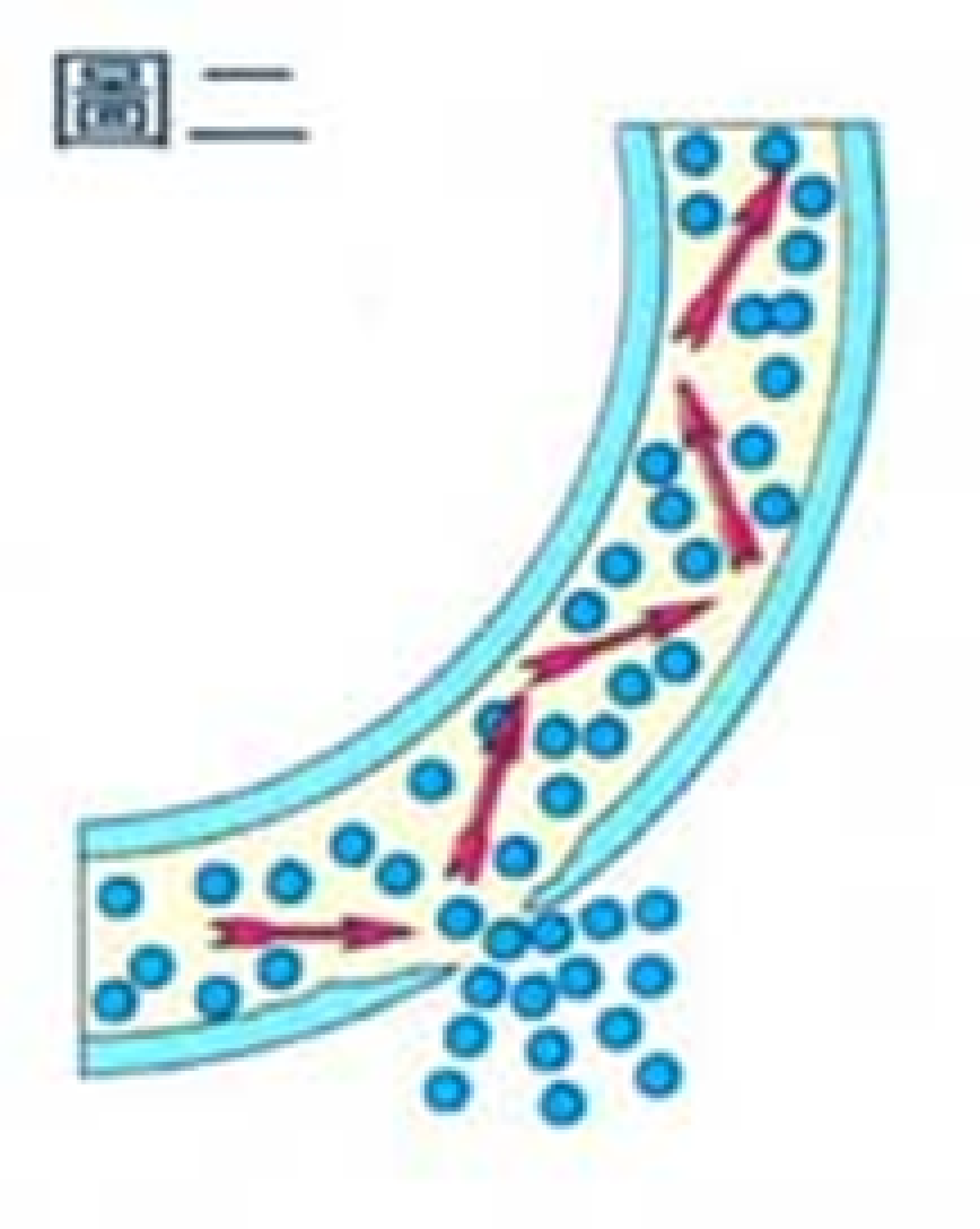
By increasing the bend radius of elbows, the impact area is spread out and the impact pressure per unit area is reduced, helping to mitigate wall wear. However, the larger inner diameter increases material rebound and turbulence, leading to reduced flow velocity. Additionally, when transporting low-melting-point materials, frictional heat from the pipe wall may cause melting and degrade product quality.
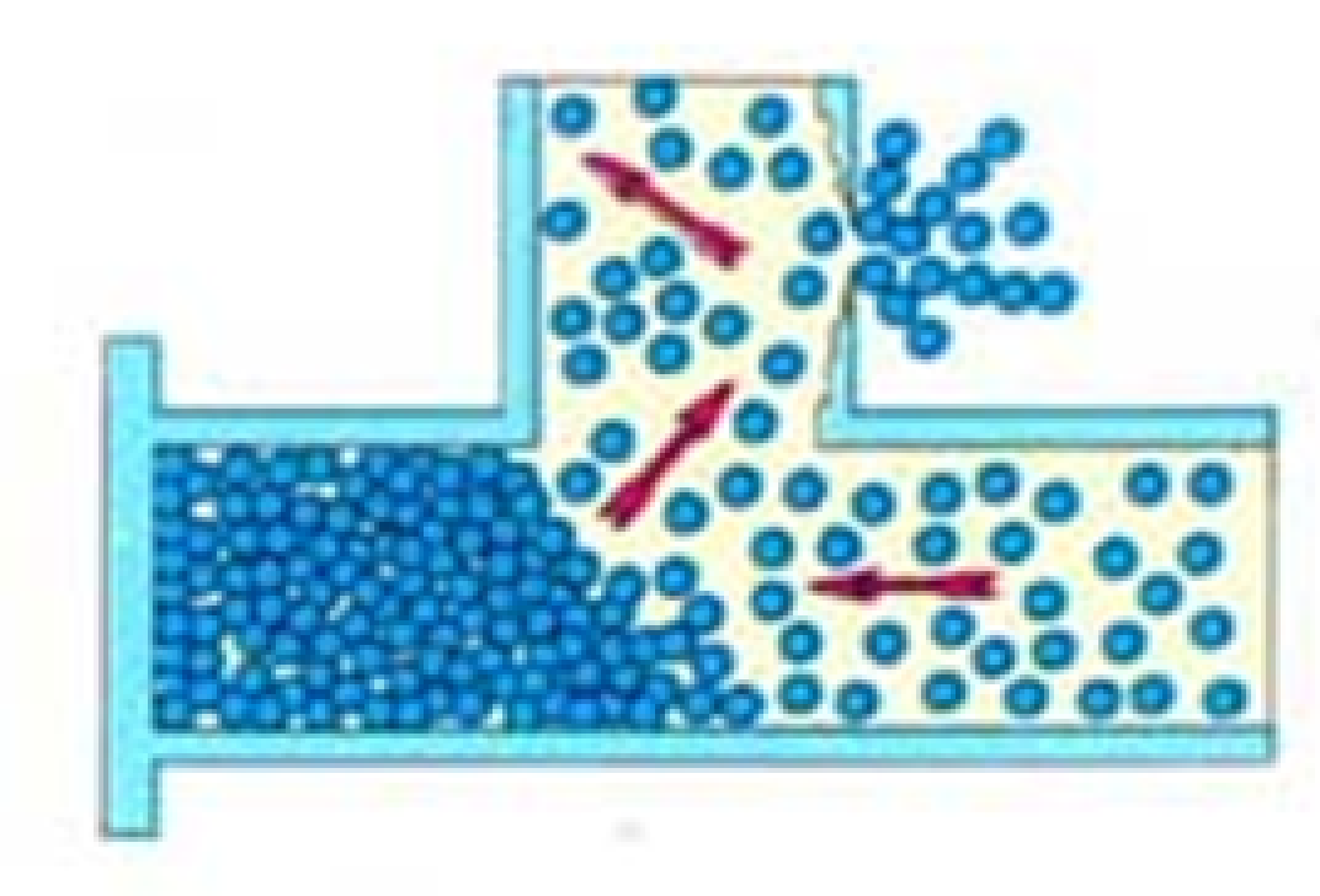
Tee and Flange Combinations
A method in which materials accumulate at the end of a T-shaped tee to act as a cushion and prevent direct impact. However, the outlet still suffers strong impact, causing severe wall wear. Fine powders may also accumulate at the end, narrowing the pipe diameter, decreasing transport efficiency, and potentially resulting in complete blockage.
Increasing pressure or introducing secondary compressed air to mitigate this leads to accelerated wear at the outlet and further equipment damage.
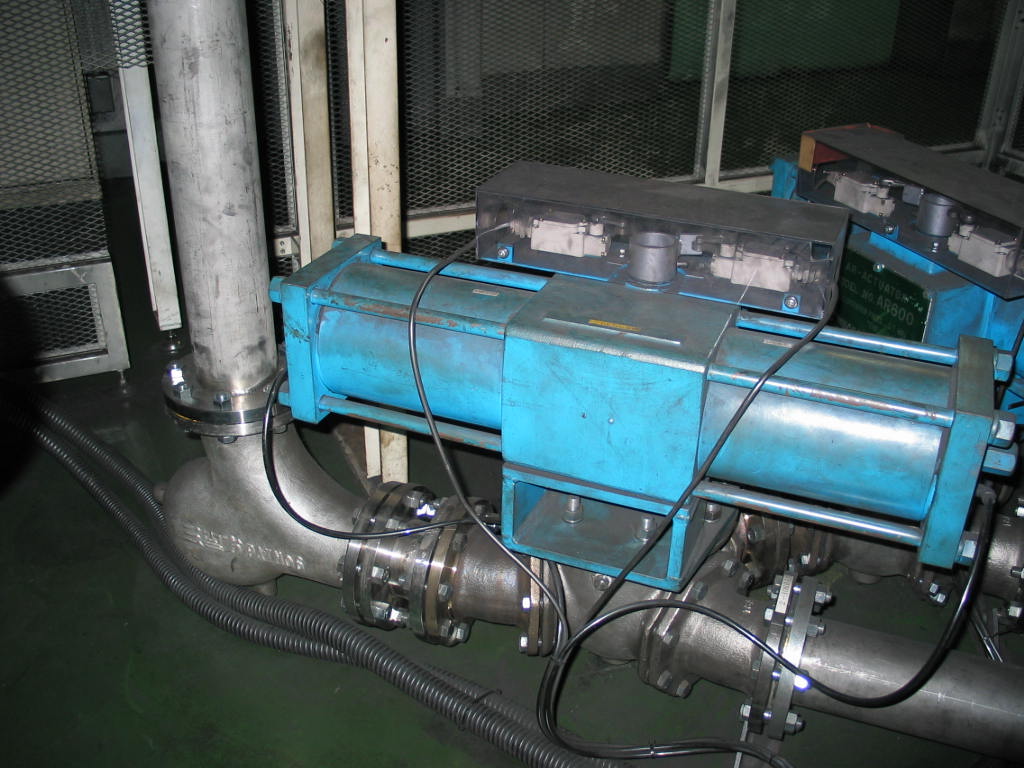

Design and Benefits of the Wear-Resistant Spiral Elbow
At the site of a secondary battery manufacturer (Company M), conventional worn elbows have been replaced with wear-resistant spiral elbows for over 25 years.
These elbows use a special spiral interior design, allowing materials to flow smoothly inside the elbow, preventing direct impact and significantly reducing wear.
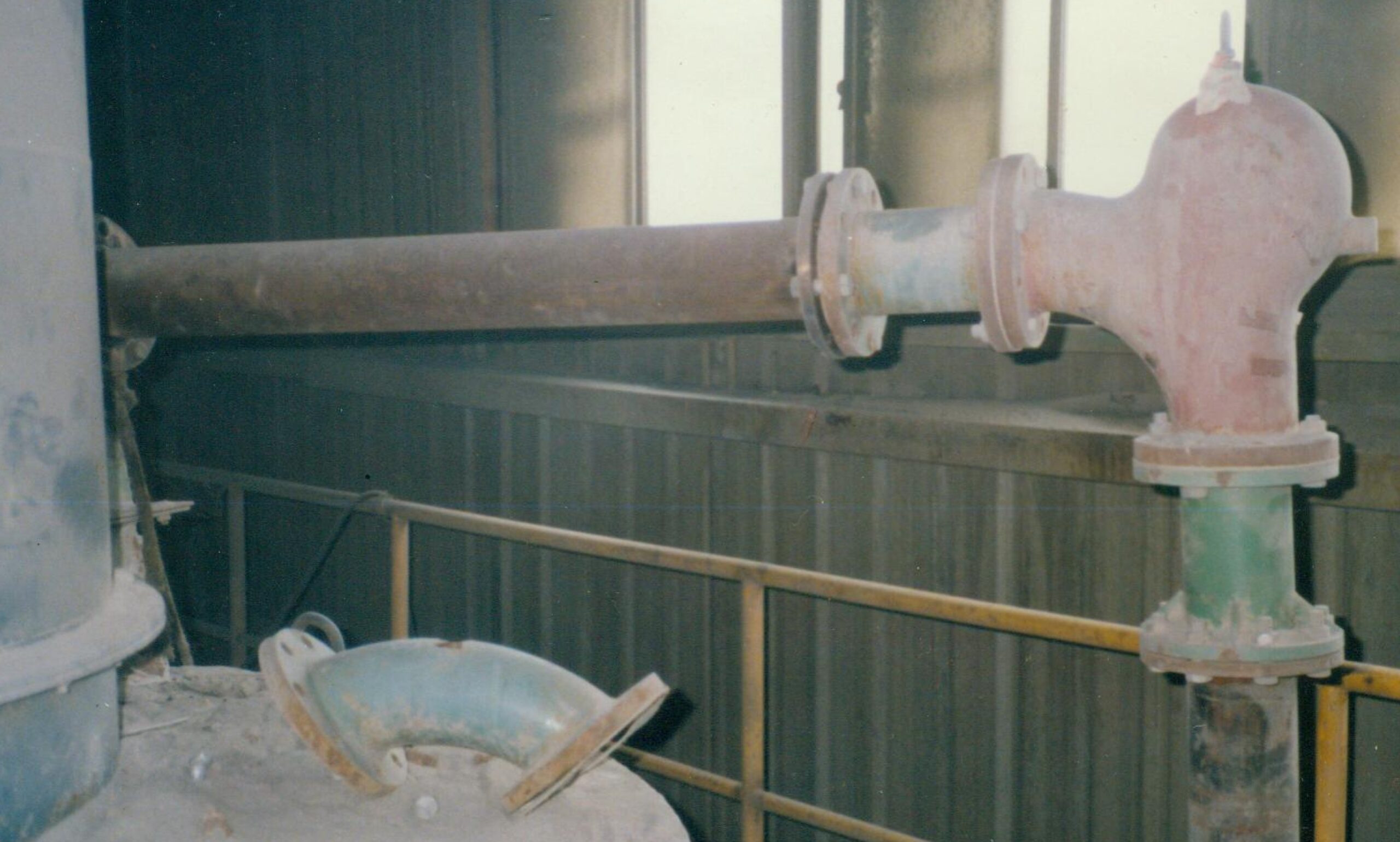
Pneumatic Conveying Pipeline and Fluid Stability Analysis
In pneumatic conveying systems, ensuring fluid stability and reducing pressure loss require special attention to the connections between instruments, control devices, valves, and flanges.
To prevent turbulence, the length of the pipe connection is usually set to at least 10 times the inner diameter.
Fluid Flow and Fully Developed Flow
When fluid enters the pipe, it is in a state of helical free vibration and is not yet fully influenced by the pipe wall. As it travels further, friction with the pipe wall alters its velocity distribution.
When the velocity distribution stabilizes and forms a uniform flow profile, it is called “fully developed flow.” The distance required to reach this state depends on the Reynolds number. Generally, laminar flow requires a longer entrance length than turbulent flow, affecting the fluid development process.
Effects of Connections on Flow and the Advantages of Spiral Elbows
At joints such as instruments, valves, and flanges, steps or gaps can cause fluid irregularities, leading to the following problems:
Pipe wear: Impact from high-speed fluid accelerates wall erosion and shortens equipment lifespan.
Increased pressure loss: Turbulence and eddies cause energy loss, raising operating costs.
The “wear-resistant spiral elbow” is an effective solution. Its design stabilizes turbulence using positive pressure in the pressure chamber, allowing fluid to pass through smoothly.
Benefits include:
Reduced pipe wear and extended equipment life.
Lower pressure loss and improved transport efficiency.
With proper pipeline design and the use of wear-resistant components, the stability and performance of pneumatic conveying systems can be improved, and maintenance costs reduced.
